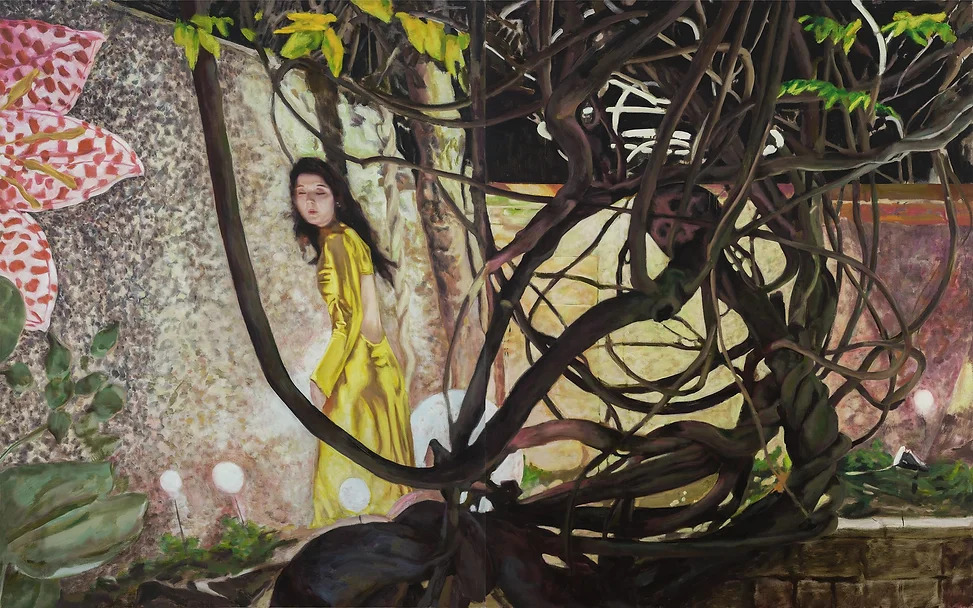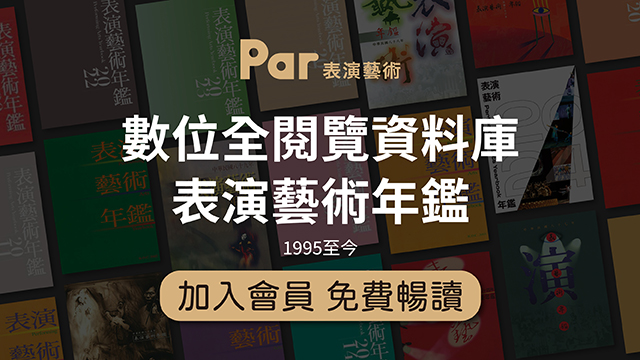郝澤成近期的繪畫作品仍然延續了他慣常對「攝影風景」的關註,視角從對巨集大曠野的探訪,逐漸拉近焦合於近身處一閃而過的掠影。 這種對風景的史詩感和圖像象徵性的進一步擱置,讓風景在被鏡頭和繪畫捕捉的雙重瞬間擁有了片段感,成為可被無限延展的「風景時刻」。
本次展題中的定語「沐光」同「目光」諧音,接續自郝澤成去年的個展「目光的深處」。 在以「藝術家的實踐」作為個案研究文本的前提下,沐光是對目光的擴寫和補充。 也是對藝術家沐浴在屏幕時間里的生活,這一現實的提及。 同時,隨著本次展覽作品中對出現的街燈和像素光(鏡頭光暈和高光)等,「電子殖民」時代中人造光源同自然光照間的對照和錯位的展開。 沐光則從一個動詞(沐浴光照),一個對風景的籠罩成為了風景本身。 即繪畫對攝影的,非圖像性的再現和擬真。
壯行(grand tour)流行於17-19世紀的歐洲。 出身顯貴的青年才俊們多由英格蘭出發,渡海攀山,遊歷歐洲的文化中心義大利和法國,甚者行至遠東。 短可數月長則數年,期間拜訪古蹟名剎,購回名畫雅集。 壯行之壯(grand)生動地描繪了探訪藝術途上的磅礴,是為一種震撼教育般的成人禮。 行(tour)則強調廣泛的實踐和探尋,恰為書本上的知識補足了大量現實依據。 在崇尚科學與思辨的啟蒙主義時期,推開其實用主義價值,壯行更像一種修辭,從而承載著《出埃及記》般的神話性和充滿浪漫主義色彩的自我認同感。 回到本次展覽中,壯行指涉了作為青年藝術個體的郝澤成 在其成長過程中對藝術的探訪、包容、思辨和自我演化。 更解釋了他何以宿命般杳然前行的決絕和坦然。
「畫照片是一個忠實而傷感的事,它直面的是失去的時間,但也是對消逝的拒絕」- 郝澤成
繪製「失去的永恆」,既是方法,也是母題。 在本次展覽的新作中,郝澤成仍然通過對照片進行繪畫式的書寫、複寫(而不是書寫式的繪畫),把私人瞬間和歷史時刻審美化和詩化,並投影於整個後現代社會生活「氤氳癥候群」中。 就例如,新作中越過樹杈的天空(反白和明度遮蓋)與繞過遮擋的光,進一步將已經確定的瞬間印象化。 這種將「解構」阻塞,遮罩邏輯,甚至反直覺的捕捉和強調,並不僅是為了強調「人為的圖像」或者「風景的符號」。 它更是強化了「攝影之中攝影本身的痕跡或者繪畫性」。
換句話說,攝影也在自行編碼和詩化風景。 好圖像或者壞圖像的定義因而被懸置,甚至被顛覆。 這一定程度的否定了傳統意義上,攝影修辭中的「證物」,還有繪畫修辭中的「景觀化」。 並暗示了一種模糊的、可能的愉悅:像壯行中只有歸途卻不設目的地的遠行; 也像相機對焦一處時,別處的過曝或失焦; 又像雲霧朦朧中相互粘連無法區分的星月之輝。
我們便可能在圖像與繪畫的表層下,發現一種不能被直接觀測的,「真實而隱匿的慾望之美」。

